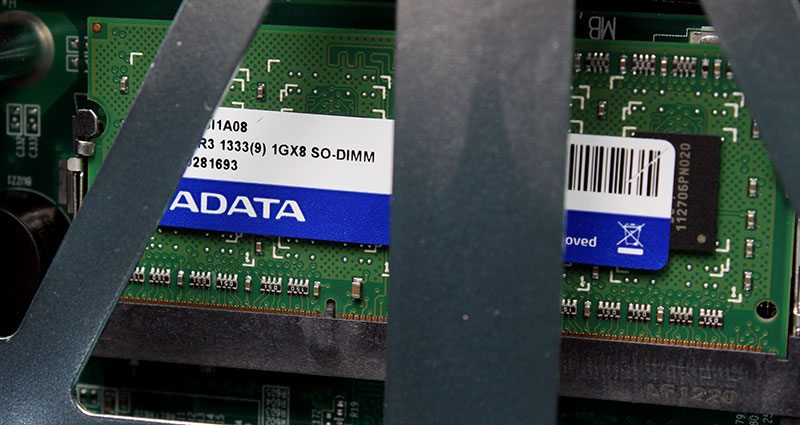Asustor AS-604T 4-bay NAS Review
Chris Hadley / 11 years ago
A Closer Look
Like pretty much every other desktop 4-bay NAS that is on the market, the AS-604T has a cube like build, which is no bad thing as it is compact, meaning that it doesn’t take up too much space on the desk or floor. Asustor have aimed these new units at the home user an so we see some design aspects that are pleasing to the eye and at the same time don’t make the unit look hard to use, which can be a key factor that would put some potential users off buying.
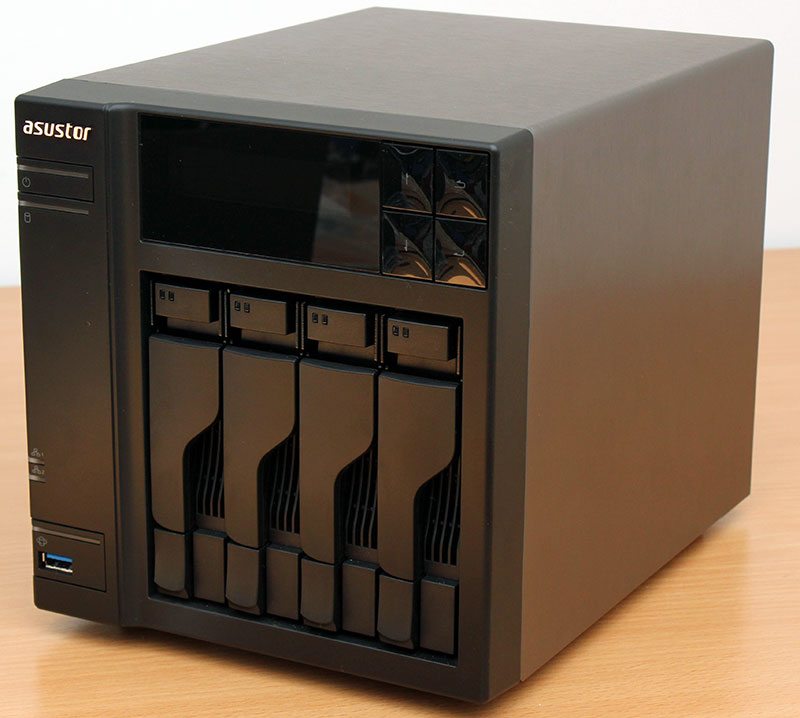
As part of the user friendly approach, Asustor have placed four over sized buttons to the top right, which whilst giving a chunky feel, also give a less fiddly feel to using the on-screen menus.
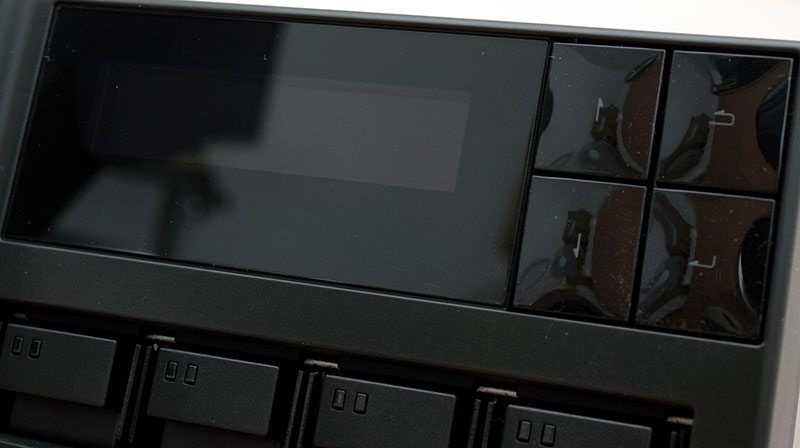
Below the Asustor branding, there is a large power button with incorporated power LED and below a system status LED.
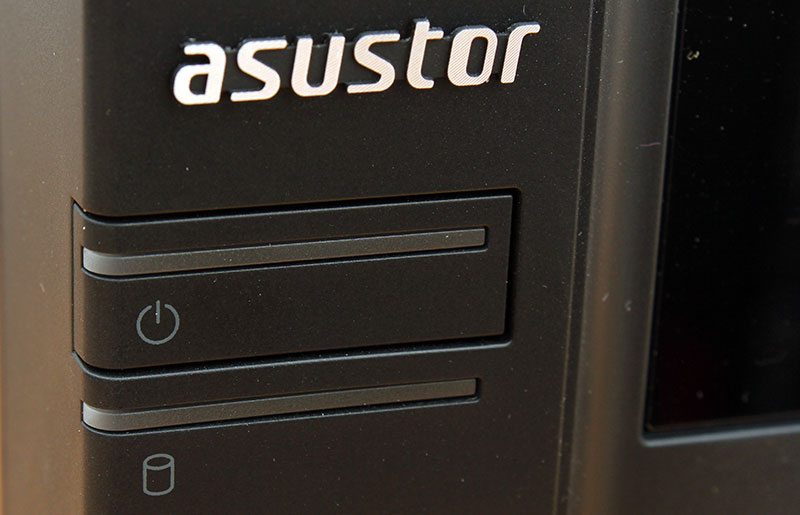
Further down the left hand side are two smaller LEDs for LAN activity on each port and at the bottom a USB3.0 port with a large button surrounding it, again with incorporated LED.
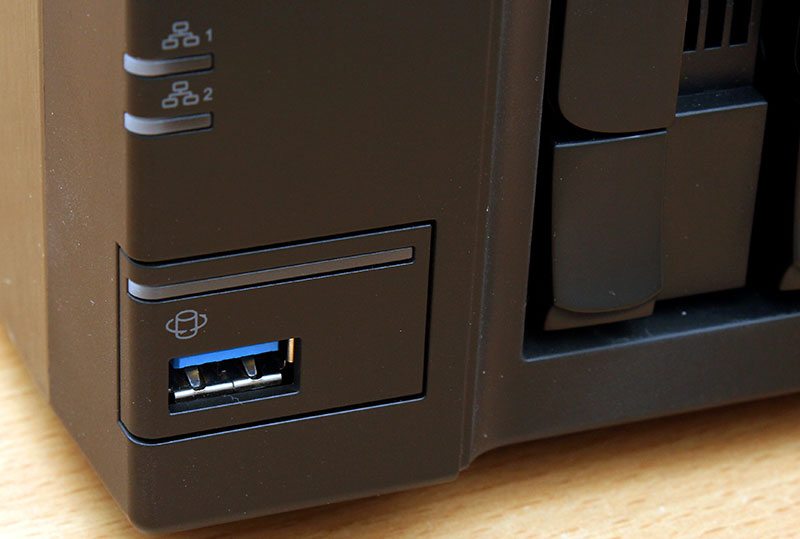
Whilst I don’t normally take a closer look at the system lights when powered on, this unit (and consequently the rest of the AS-6xxT family) has something about it that draws me in. What I’m referring to here is the warm colours the the system lights up with and a refreshing change to the LCD with the pleasant white text on a black background rather than the bright blue screens that I’m used to seeing.
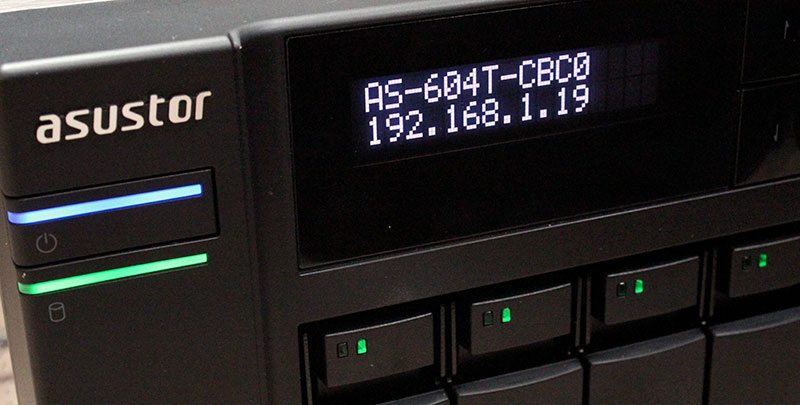
The four bays within the AS-604T are arranged vertically, with bay one on the left through to bay four on the right. In keeping with the up-to-date design of the system, the trays each feature some simple curves to the handles with a smooth black finish that give a nice style to the system. On the top of each bay we can see that there are two lights, one indicating drive power and activity and the other which would light to indicate a drive failure.
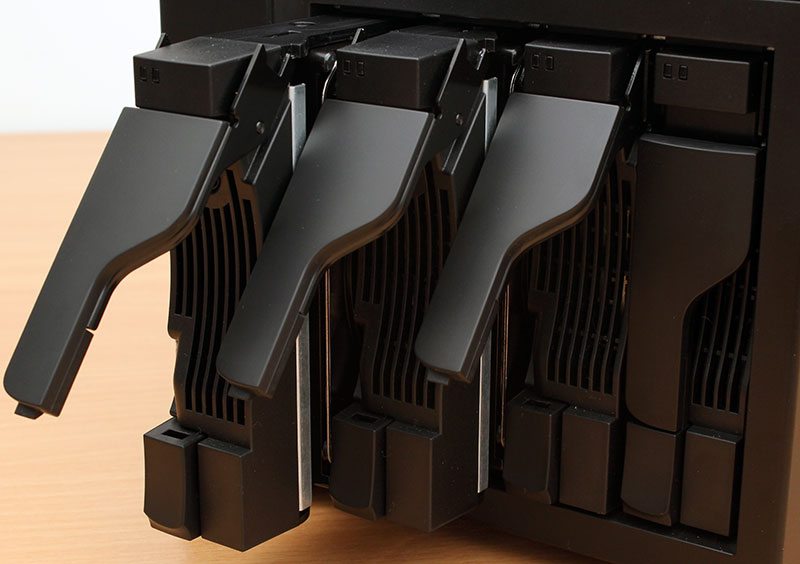
Looking a little closer at the trays, each of the handles is released by pressing down on a latch at the right hand edge of the handle, allowing it to spring up and unlock for removal. The trays all have a solid feel to them and are well lined inside with a plastic coating on the base to reduce any noise from vibration of the drives.
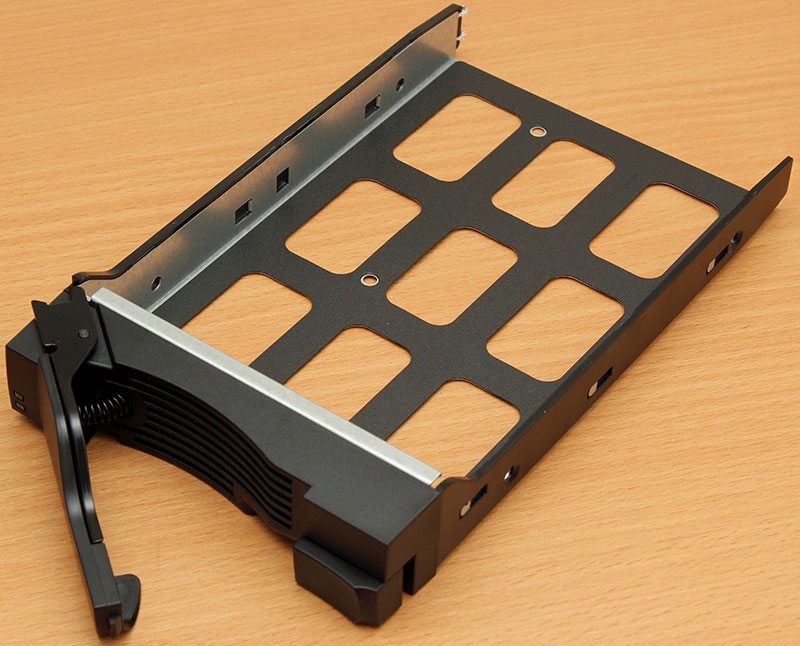
The trays are also well ventilated and with a disk fitted we can see more clearly how air can flow through the front of the tray and around to the drive itself.
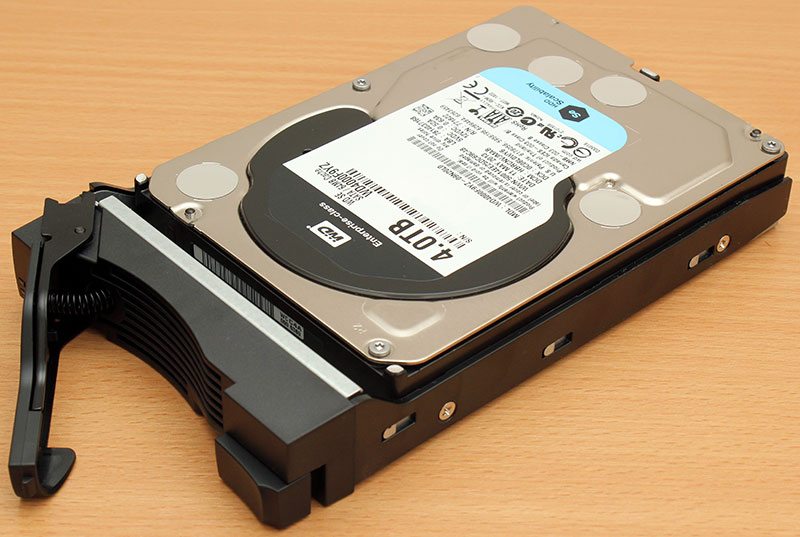
With all the drives removed from the system and having a first peek inside, we can first of all see at the top of the image below four pairs of LEDs that light up through the trays to be seen from the front of the system. Below these there is also a good amount of ventilation provided by a series of holes in the PCB, allowing air to flow past the drives and out the back of the system.
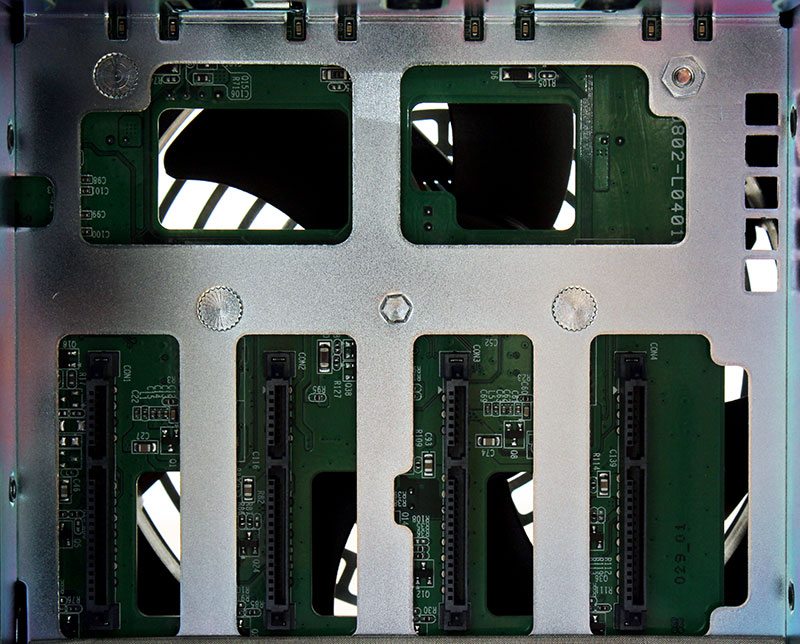
Looking at the back of the NAS, the vast majority of the rear is taken up by the huge 120mm fan with the power supply nestled above. To the right is a secondary USB3.0 port, two, eSATA, four USB2.0, HDMI and two Gigabit Ethernet ports, supporting link aggregation.
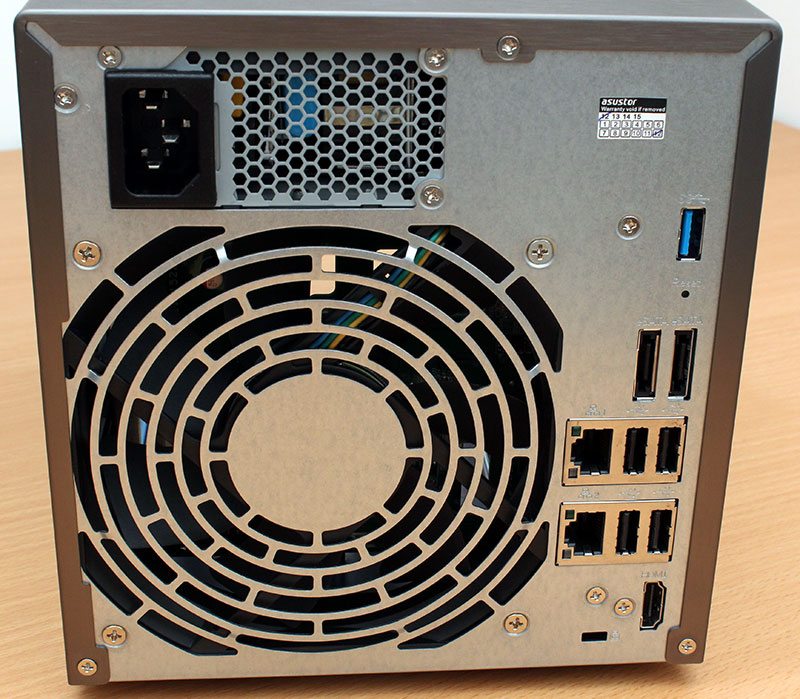
Removing the cover, we can first of all see the power supply for the NAS. The AS-604T is specified to use 33.2W of power under full operation whilst at full idle it is rated to use a mere 1.4W. The motherboard is mounted on its side to the left of the drive bays and this orientation, as found on most other systems of this type, contributes to a relatively compact build with no space left to waste.
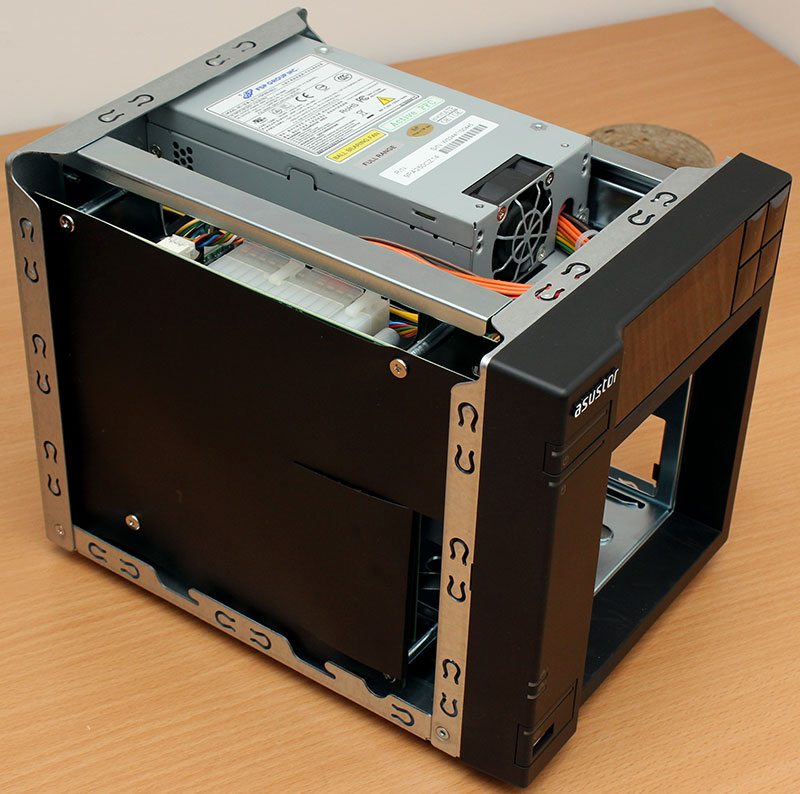
On the back of the motherboard there is a black plastic cover to protect the PCB from shorting out on the chassis, however towards the front the is a portion that has been cut. Lifting up this flap reveals a SO-DIMM slot, allowing for a memory upgrade from the shipped 1GB, up to a max of 3GB.
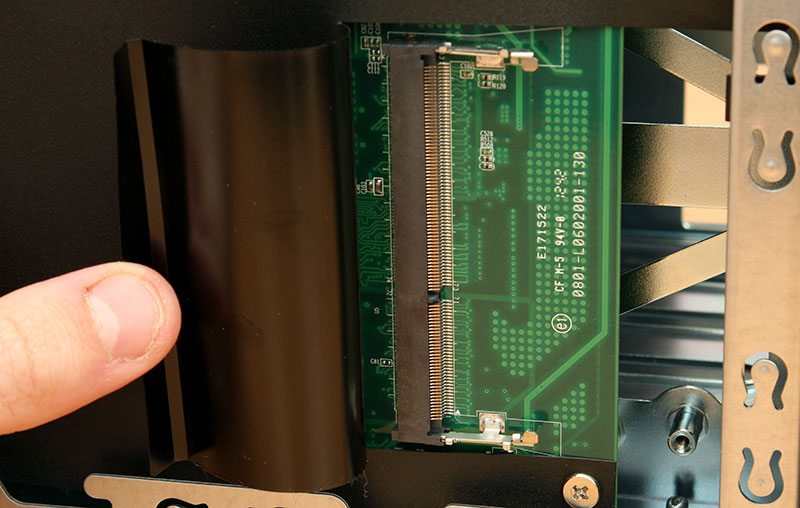
The motherboard is very well secured into the NAS and unfortunately it was almost impossible to remove, short of completely de-constructing the system. Fortunately though we can peer through the top of the system and see that the systems OS is stored on a DOM courtesy of ADATA. To the left of the image is a heatsink, below which is a dual-core Intel Atom CPU clocked to 2.13GHz.
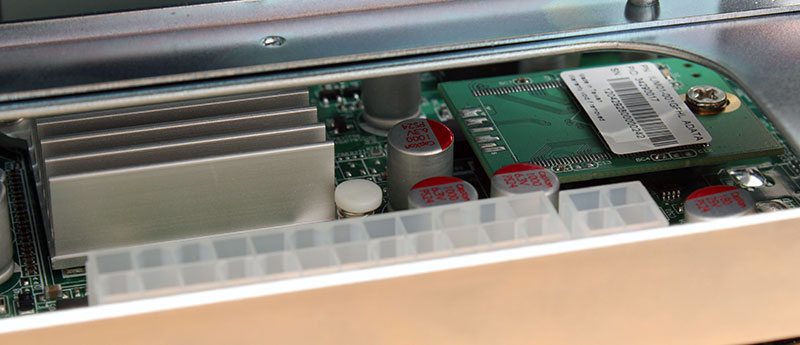
Peering through the opposite side of the chassis, we can also see that the factory fitted 1GB DDR3 1333Mz SO-DIMM is supplied by ADATA like the DOM.
